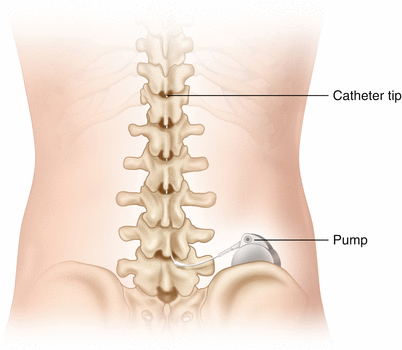Fig. 40.1
Langer’s lines
Knowing the direction of Langer’s lines within a specific area of the skin is important for surgical operations, particularly cosmetic surgery. If a surgeon has a choice about where and in what direction to place an incision, he or she may choose to cut in the direction of Langer’s lines. Incisions made parallel to Langer’s lines may heal better and produce less scarring than those that cut across these lines. Conversely, incisions perpendicular to Langer’s lines have a tendency to pucker and remain obvious, although sometimes this is unavoidable. The same could be said for taking care not to cut across old scar or hypertrophic scar. Almost assuredly the outcome will be poor.
Evaluation of local infection should be performed on the skin with the pocket location being altered based on any infectious-appearing areas. An evaluation of skin turgor and texture should be performed to determine whether the patient has acceptable nutrition to tolerate the placement of the device in the subcutaneous tissue or whether a need exists to place the device below the fascia. The patient should consider visiting with her or his primary care doctor to optimize comorbidities and nutritional status prior to surgery. Finally an evaluation should be done to determine whether the patient has skin viability to handle the procedure. This point may be important in patients on long-term high-dose steroids, with renal disease, or with chronic skin diseases.
Once the preoperative assessment is completed, the patient is taken to the operating theater and positioned. When positioning the patient, the placement of the pocket must be given consideration. The abdomen must be properly exposed and draping should allow for easy visual inspection of the surgical field, rib margin, pelvis, and umbilicus. This exposure will allow the physician to properly utilize the information obtained in the preoperative period. In some settings because of body habitus, previous surgeries, or skin issues, the pocket is placed in the lumbar region posteriorly. In these settings the patient can be positioned in the prone position.
Another area of concern is the need to maintain a sterile field on the abdomen while placing the catheter, using fluoroscopy, and anchoring the catheter. This often requires manipulating the fluoroscopy machine from an anteroposterior view to a lateral view with close contact above the abdomen. The author recommends using a three-quarter sheet over the abdomen until it is time to make the pocket. This will reduce the risk of secondary contamination (Fig. 40.2).


Fig. 40.2
Fluoroscopy unit with lateral view
Once the patient has been properly prepared, the surgeon makes the skin incision to initiate pocket formation. Prior to incision the patient must be properly anesthetized with either local anesthesia, intravenous sedation, or both. The incision should be made with the skin retracted to a taut orientation. A #11 or #15 blade is the most commonly used instrument for incision. The incision can be made to the desired depth, which can be used as an entry point for pocket dissection, or the incision can be made just below the dermis and the depth can be achieved with cutting electrothermal dissection. The normal depth of the pocket ranges from 1 to 3 cm based on physician preference. The pocket can be made by sharp dissection with surgical scissors or by blunt dissection with the surgeon’s hand or the blunt portion of an instrument. The method of pocket dissection chosen is based on physician preference and training. The pocket should be 110–120 % of the total volume of the pump. The physician may use the pump to measure the pocket size as dissection is carried out. If the pocket is too large, it may lead to pump movement and even result in the pump flipping. If the pocket is too small, it may lead to tissue pressure and possible discomfort or, in worse-case scenarios, tissue erosion with loss of the device. Unfortunately, even with careful attention to detail, the patient may develop some of these issues over time owing to the health of the adipose, fascia, and skin tissues.
Regardless of dissection technique, the tissue should be manipulated gently to avoid the later complication of seroma. If epinephrine is placed in the local anesthetic, it may retard some small vessel bleeding, but it can also cause a delay that can lead to bleeding after wound closure. The physician must be aware of this issue. Hemostasis can be achieved by electrocautery, suturing of the vessel, and applying pressure by packing the wound with antibiotic-soaked surgical tapes.
Once the pocket has been properly sized, the pump has been tested for proper fit, and the catheter has been tunneled to the pocket, the physician can connect the pump to the catheter and secure the connection to avoid disruption of the system. Prior to placing the pump into the pocket for the final time, the nonabsorbable suture is placed into the tissue. The suture can then be applied to suture loops on the pump, which will secure its position. The authors prefer suture loop pumps, but an alternative is to use a Dacron pouch, which allows suturing of the pouch to hold to the pump in place. The downside of the pouch is scarring over time that may make future revisions difficult. As the pump is placed in the pocket, the implanting doctor needs to pay attention to the location of the side port and pump catheter connector. The shape of this part of the pump can irritate the tissue and potentially cause pain. The patient’s body habitus should be considered when placing the side port and the connector and the position should be noted in the operative note if it varies in individual patients.

Full access? Get Clinical Tree







